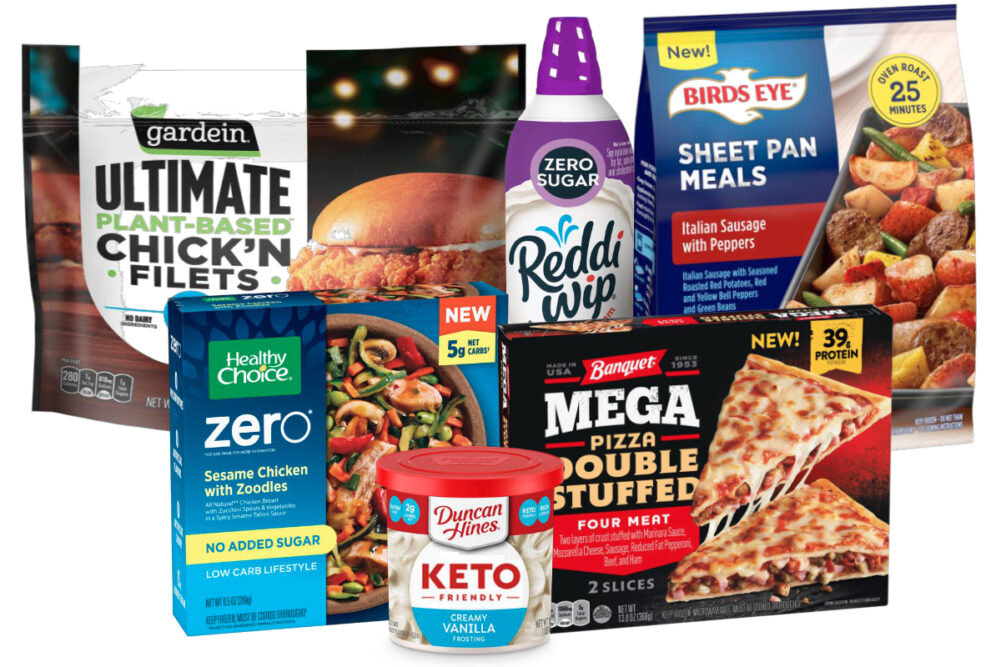CHICAGO — Conagra Brands, Inc. expects to emerge from the COVID-19 pandemic with higher volumes and market share thanks to the “stickiness” of demand driven by the pandemic, said Sean M. Connolly, president and chief executive officer. Company executives expect inflation, which increased 3.9% in the third quarter ended Feb. 28, to stick around as well. They have plans in place to combat that headwind.
“During the '08-'09 recession, we saw consumers shift from primarily consuming meals sourced away from home to meals sourced in home,” Mr. Connolly said in an April 8 earnings call. “While this shift is not surprising during the heart of a recession, it's important to recognize that the change in behavior, although event-driven, lasted well past the recovery, and we believe that a good portion of that change in behavior was driven by the formation of new habits.
“Psychology experts assert that it takes on average 66 days for a new behavior to become habitual. As you all know, we are nearly 400 days into the COVID-19 pandemic. Consumers have adapted to at-home eating and formed new habits that we expect to sustain well beyond the current conditions.”
Chicago-based Conagra on April 8 posted net income of $281.4 million, or 58¢ per share on the common stock, in the third quarter, which was up 38% from $204.4 million, or 42¢ per share, in the previous year’s third quarter. Net sales increased 9% to $2.77 billion from $2.56 billion in the previous year’s third quarter. Elevated at-home consumption brought on by the COVID-19 pandemic drove sales. Organic net sales increased 10%. A 1.2% decrease came from the divestitures of the Lender’s bagel business, the H.K. Anderson business and the Peter Pan peanut butter business as well as the exit of the private label peanut butter business.
Since the beginning of COVID-19 in March 2020, Conagra has gained the equivalent of more than four years’ worth of incremental new buyers, Mr. Connolly said. Nearly half of the new buyers were millennials and Generation Z, he said.
“Younger groups are engaging more and more with our staples segment as they learn how to cook at home,” Mr. Connolly said, adding young adults increasingly are moving from urban areas to smaller cities and suburbs where fewer options for eating away from home exist.
Conagra executives do not expect to match the sales growth of 21% in the previous year’s fourth quarter, which benefited from the beginning of the pandemic. They expect organic net sales to decrease 10% to 12% in this year’s fourth quarter.
The 3.9% increase in inflation in the third quarter was above expectations of 3.5%, said David S. Marberger, executive vice president and chief financial officer.
“History shows us that price adjustments are more likely to be accepted in the market when industrywide and broad-based input cost inflation occurs, and that's the environment we see today.” — David Marberger, Conagra Brands
“We expect the rate of inflation to continue to accelerate over the next few quarters,” he said in the earnings call. “Fortunately, we have a variety of levers that can be used to offset this pressure, including pricing. We have already mobilized our inflation-justified pricing plans with some actions already in market, others communicated to customers and some yet to come.
“History shows us that price adjustments are more likely to be accepted in the market when industrywide and broad-based input cost inflation occurs, and that's the environment we see today.”
Vaccinations should help, too.
“As people become vaccinated, the entire end-to-end supply chain is going to benefit from less supply disruption, and that will enable us to reduce excess costs being incurred in fiscal '21 to support demand,” Mr. Marberger said.
To meet demand for its at-home products, Conagra invested about $15 million in transportation in the third quarter.
“This meant aggressively seeking out every available truck and adjusting how we ship to customers,” Mr. Marberger said. “To best service demand for certain brands, we had to bypass our normal distribution network and ship directly to customers. While we incurred additional costs to implement these actions, which impacted our operating margin, this enabled us to minimize out of stocks, maximize on-shelf availability and maximize profit dollars.”
In the grocery and snacks segment in the third quarter, operating profit increased 46% to $290.2 million. Net sales increased 11% to $1.13 billion. Snack brands experiencing strong organic net sales growth were Orville Redenbacher’s, Act II, Swiss Miss, Snack Pack and Slim Jim.
In the refrigerated and frozen segment, operating profit increased 13% to $214.6 million. Net sales increased 12% to $1.2 billion. Brands with the strongest organic sales growth were Marie Callender’s, Birds Eye, Banquet, P.F. Chang’s Home Menu and Reddi-wip.
In the foodservice segment, operating profit fell 53% to $12.8 million. The impacts of lower organic net sales, higher input costs and expenses related to COVID-19 more than offset favorable impacts of supply chain productivity and synergies associated with the Pinnacle Foods acquisition. Net sales plunged 17% to $194 million.
In the international segment, operating profit rose 25% to $27.8 million. Net sales increased 9% to $240.9 million.
Companywide, net income through the first three quarters of the fiscal year was $989.3 million, or $2.03 per share on the common stock, which was up 55% from $638.7 million, or $1.31 per share, in the same time of the previous year. Net sales rose 9% to $8.45 billion from $7.77 billion.




